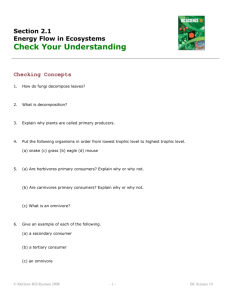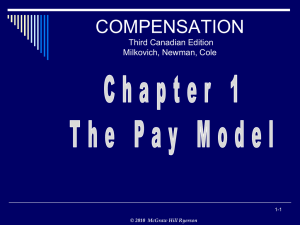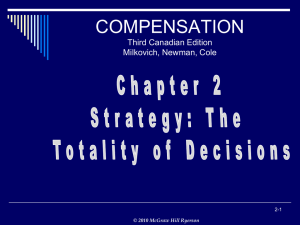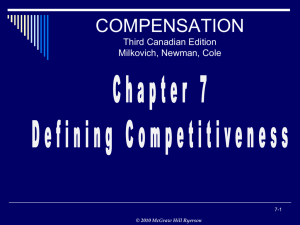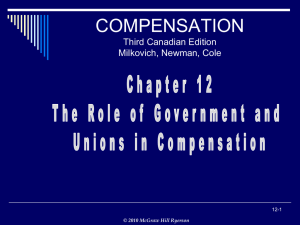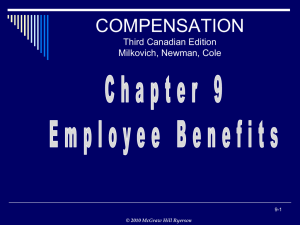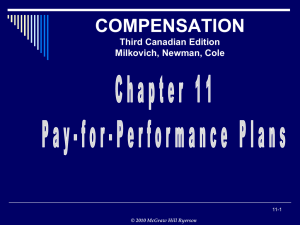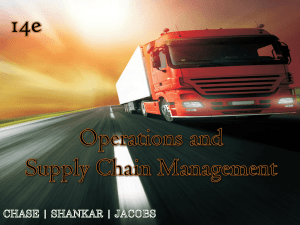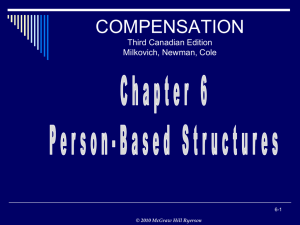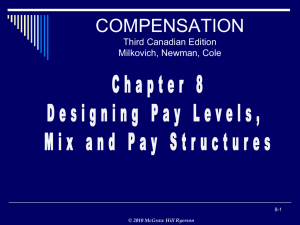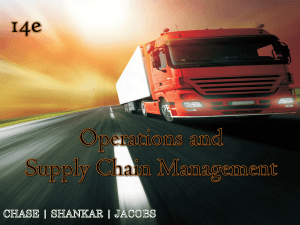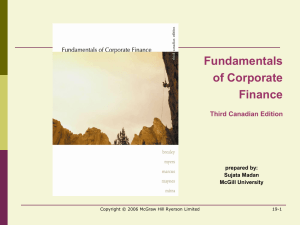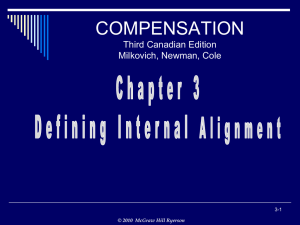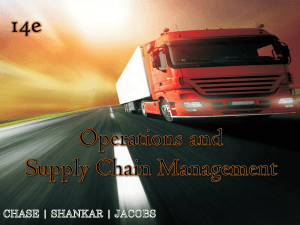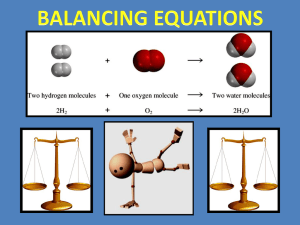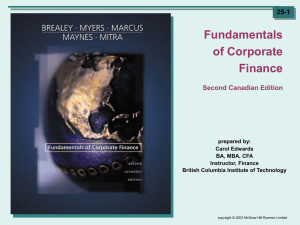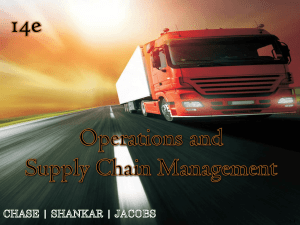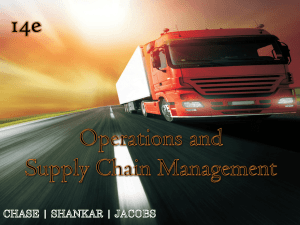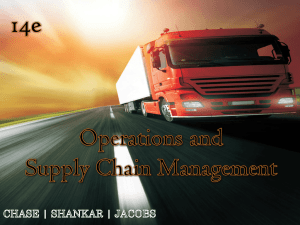Chapter 18
advertisement
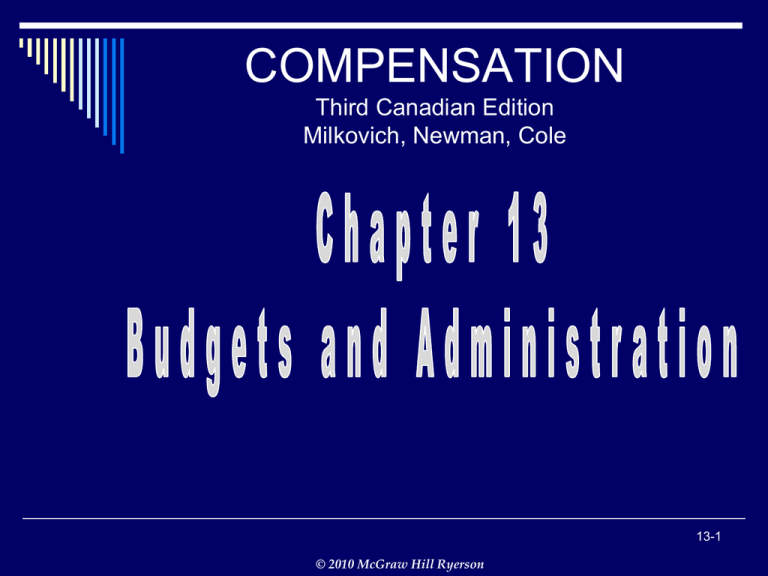
COMPENSATION Third Canadian Edition Milkovich, Newman, Cole 13-1 © 2010 McGraw Hill Ryerson Managing Labour Costs Labour Costs = Employment x Average cash + Average compensation benefit cost Core Base Pay Variable Pay Contingent 13-2 © 2010 McGraw Hill Ryerson Managing Labour Costs controlling employment: head count and hours controlling average cash compensation costs 13-3 © 2010 McGraw Hill Ryerson Controlling Salary Costs: Top Down current year’s rise ability to pay competitive market turnover effects cost of living 13-4 © 2010 McGraw Hill Ryerson Three Distinct but Related Concepts and Their Measures Employee’s cost of living Consumer Price Index Goods/service markets price changes Personal Expense Budget Labour market wage changes Pay Surveys 13-5 © 2010 McGraw Hill Ryerson Controlling Salary Costs: Bottom Up instruct managers in compensation policies and techniques distribute forecasting instructions and worksheets provide consultation to managers check data and compile reports analyze forecasts review/revise forecasts and budgets with management conduct feedback with management monitor budgeted versus actual increases 13-6 © 2010 McGraw Hill Ryerson Inherent Controls range maximums and minimums broad bands compa-ratios variable pay analyzing costs of wage proposals 13-7 © 2010 McGraw Hill Ryerson The Compensation Communication Cycle Defining the Objectives What are the goals? Evaluating the Program Obtaining the Information Was the program successful? What is the current situation? Conducting the Sessions Developing the Strategy How should the sessions be implemented? What is the best overall approach? Determining the Media What “tools” are most appropriate? 13-8 © 2010 McGraw Hill Ryerson Compensation Components Communicated to All Audiences job descriptions job evaluation market data collection and analysis pay structure development incentive plan design performance appraisal system salary management administration procedures benefit plans 13-9 © 2010 McGraw Hill Ryerson Conducting Formal Communication Sessions for Various Audiences EXECUTIVES MANAGERS EMPLOYEES Components explained in a general way Components thoroughly explained throughout the communication process Fairly detailed explanation of components Emphasis on strategic implications of the compensation system Reviewed at the formal sessions Emphasis on both process and policy information Executive compensation explained in detail in one-on-one meetings Emphasis on development and motivation of employees using salary management, performance appraisal, and incentive plan Particular attention paid to the workings of the incentive plan 13-10 © 2010 McGraw Hill Ryerson Structuring the Compensation Function centralization – decentralization flexibility within corporate-wide principles reengineering and outsourcing 13-11 © 2010 McGraw Hill Ryerson Conclusion pay administration includes control of how managers decide individual employees’ pay and of overall costs of labour the salary budgeting and forecasting processes impose additional controls pay systems are tools that must be evaluated in terms of usefulness in achieving an organization’s objectives 13-12 © 2010 McGraw Hill Ryerson
